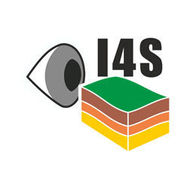Rapid and adjustable shifted excitation Raman difference spectroscopy using a dual‐wavelength diode laser at 785 nm (2018.0)
Maiwald M., Sumpf B., Tränkle G.
Journal of Raman Spectroscopy, 49 (11), 1765-1775
Abstract
AbstractIn this paper, we present rapid and adjustable shifted excitation Raman difference spectroscopy (SERDS). A dual‐wavelength diode laser emitting at 785 nm is used as the excitation light source. Two laser resonators are realized in a single chip, and two distributed Bragg reflector gratings provide two excitation lines at 785 nm. For each laser line, an optical power of 170 mW is achieved. Two separate heater elements are implemented and are used to realize a flexible spectral distance up to 36 cm−1. At selected spectral distances from 1 to 30 cm−1, an alternating operation with modulation frequencies up to 100 Hz is performed and shows stable spectral properties including a narrow linewidth of 11 pm. Raman experiments are carried out using ethanol as the target substance and Irish cream as the test sample. Raman and SERDS spectra at the selected spectral distances are presented and discussed with respect to the analytes under study. The described alternating operation for SERDS is demonstrated with integration times down to 50 ms for a single Raman spectrum. A carefully selected spectral distance of 15 cm−1 between both laser lines allows a discrimination of closely neighbored Raman bands of Irish cream and shows a 15‐fold improvement of the signal‐to‐background noise in the reconstructed SERDS spectra. The results demonstrate rapid and adjustable SERDS using a dual‐wavelength diode laser as a potential tool for Raman applications such as real‐time diagnostic during surgeries, in situ measurements, which require quick on‐site decisions, and Raman experiments with strong background interferences, for example, from laser‐induced fluorescence and ambient light.